- Introduction
- How the Level of Self-esteem Changes During Middle Childhood
- Factors that Contribute to this Change
- Influences on School-Age Children’s Self-Esteem
- Effects of Very High Self-esteem on Children’s Adjustment
- Typical Consequences of Low Self-Esteem
- Strategies that Parents and Teachers Can Use to Promote Children’s Self-esteem
- Behaviors that Adults Should Avoid
- Conclusion
- References
Introduction
- Require interrelating with peers and adults.
- A new environment that has regulations.
- Concerns the way children accomplish tasks.
- Stresses at home, for instance, violence (Magro et al., 2019).
- Parents and teachers should help children.
A crucial point in the development of self-esteem arises when children begin schooling, particularly during middle childhood. The self-esteem of most children falls the moment that they require interrelating with peers and adults in a new environment that has regulations that could appear unpleasant and unfamiliar. During the early school-age period, self-esteem concerns the way children accomplish set academic tasks and their performance in extracurricular activities. Stresses at home, for instance, family violence, and challenges at school such as being bullied have negative effects on children’s self-esteem (Magro et al., 2019). Parents and teachers should help children to build an internal sense of self-control, which helps in promoting or managing self-esteem.
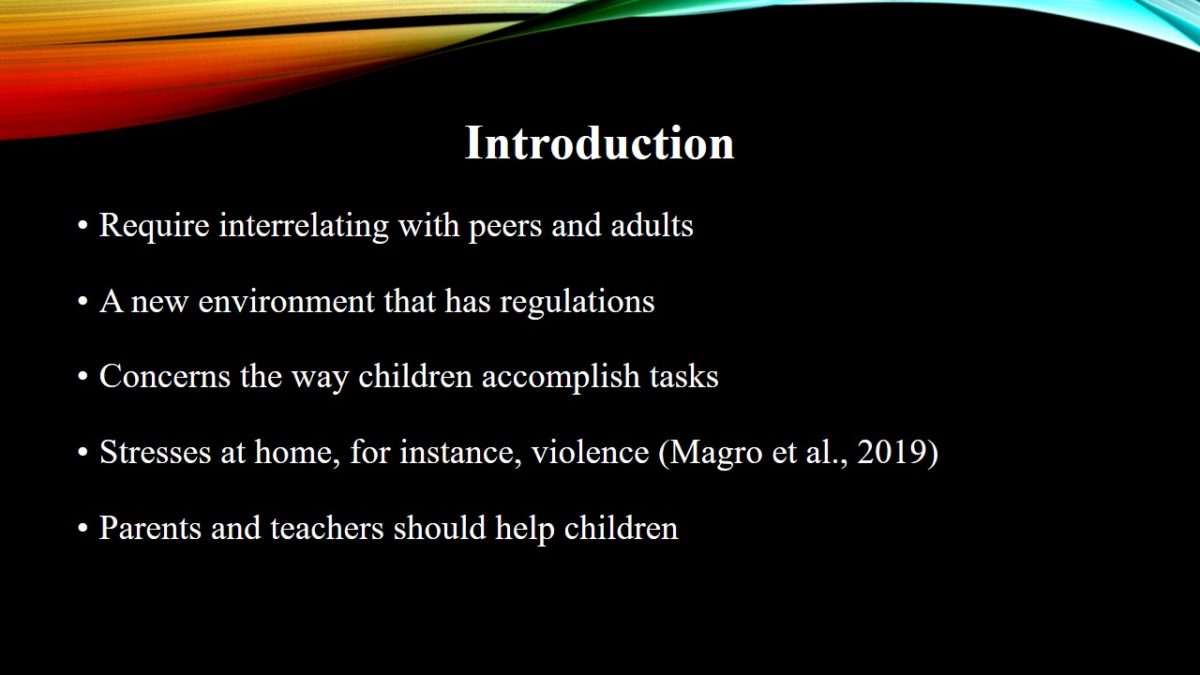
How the Level of Self-esteem Changes During Middle Childhood
- Level of self-esteem plays fundamental role.
- Promotion of peer relations, and resilience.
- Handling the challenges and achievements encountered (Chung et al., 2017).
- Looks and improved performance increase self-esteem.
- Varies depending on the present experience.
- To improve performance or evade failure.
The level of self-esteem plays a fundamental role in the promotion of children’s physical and academic capabilities, peer relations, and resilience. The degree of self-esteem characteristically varies during middle childhood as children go through different challenges and achievements (Chung et al., 2017). Attractiveness and improved performance increase self-esteem while failure and inability to make friends decrease it. In middle childhood, self-esteem has a high likelihood of varying from time to time depending on the present experience. Changing self-esteem is vital in enabling children to improve their performance or evade failure.
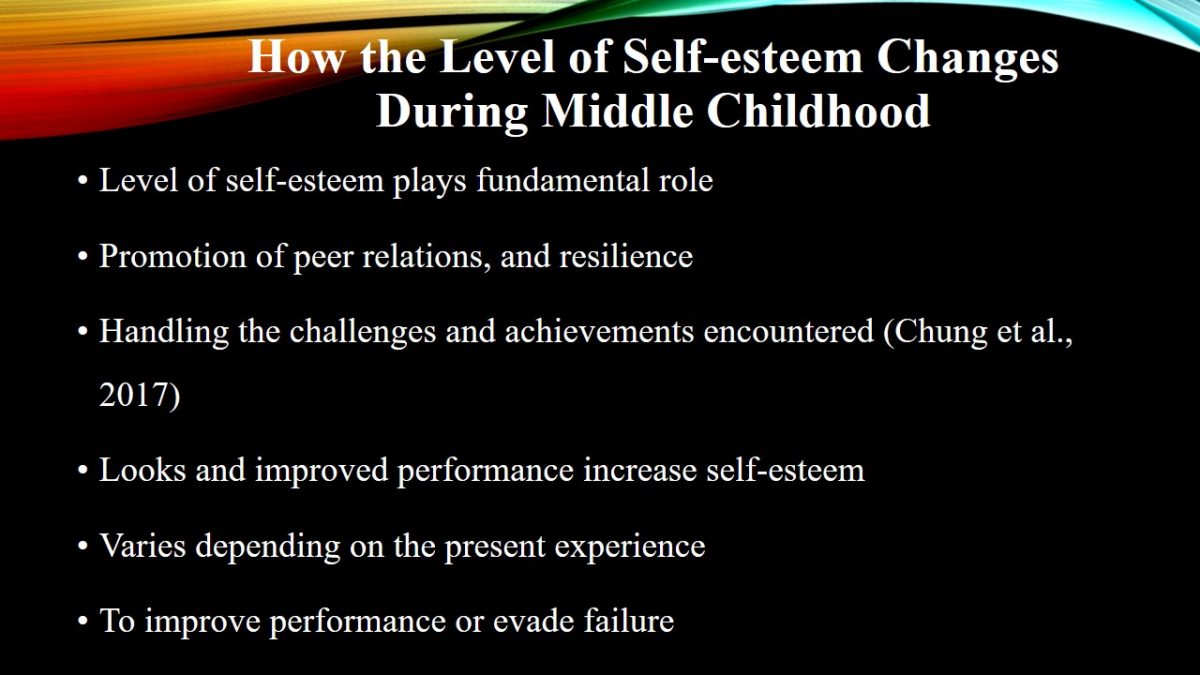
Factors that Contribute to this Change
- Emotional and physical changes.
- Boys’ early occurrence of growth spurt.
- Identify as masculine, athletic, and self-assured.
- Early maturation lowers self-esteem for girls.
- Fitting in with peers is significant (Magro et al., 2019).
- Basis of confidence, security, and self-esteem.
The emotional and physical changes in middle childhood present ups and downs that contribute to the variation of self-esteem. In boys, the early occurrence of growth spurt increases self-esteem because it makes them identify themselves as masculine, athletic, and self-assured. On the contrary, early maturation lowers self-esteem because it seems embarrassing for girls as they feel awkward. In middle childhood, the ability to fit in with peers is a significant aspect in determining the level of self-esteem (Magro et al., 2019). A good relationship with peers and the ability to make friends is a basis of confidence, security, and high self-esteem.
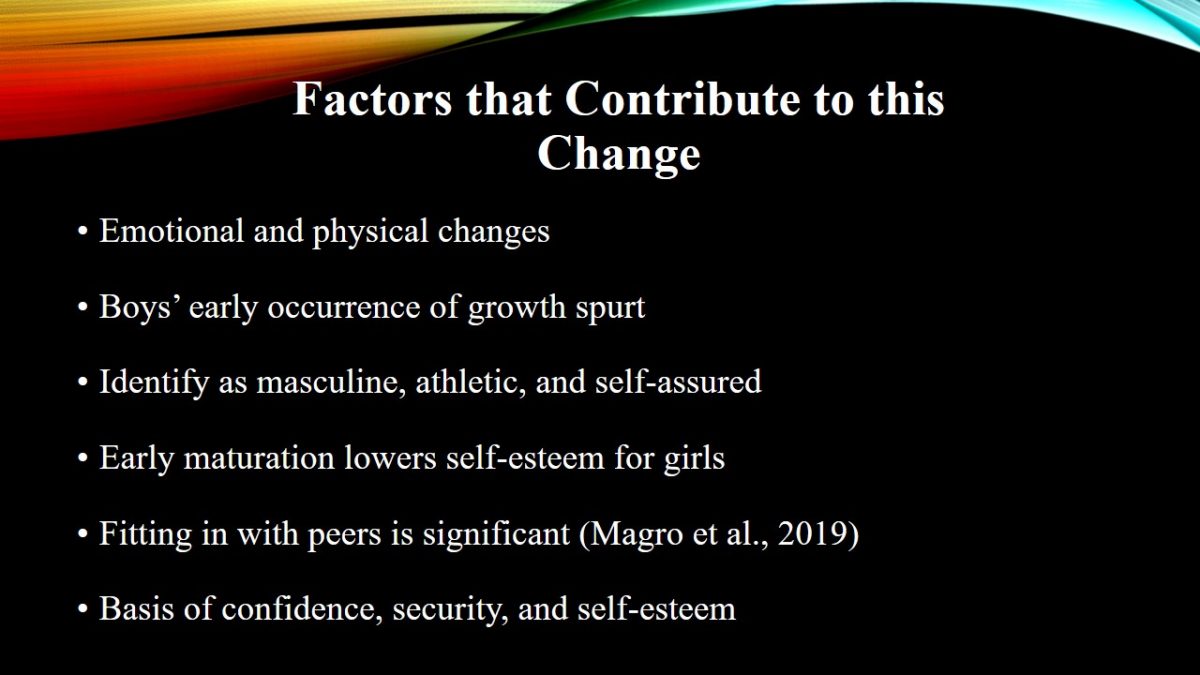
Influences on School-Age Children’s Self-Esteem
- Peer acceptance and connections are vital.
- Plays a critical role in self-esteem.
- Encompass companionship, recreation, and social abilities.
- Factor that influences self-esteem is age (Chung et al., 2017).
- Rises gradually up to middle childhood.
- Keeps growing or starts to decline.
- Girls have a likelihood of vulnerability.
- Is attributable to enhanced social pressure.
- Underscores physical looks (beauty) than intelligence.
- Socioeconomic status strongly influences children’s self-esteem.
- Body image is immense for children (Magro et al., 2019).
- Negative comparison against socially set standards.
Acceptance of peers and connections are vital in children’s emotional and social development. Such occurrences either increase or decrease self-esteem depending on the pleasure or displeasure of the present situation. The major influences on school-age children’s self-esteem encompass companionship, recreation, and social abilities (Chung et al., 2017). Another influencing aspect of school-age children’s self-esteem is age. Companionship and social abilities sway school-age children’s self-esteem by making it rise gradually up to middle childhood where the transition from a familiar school environment to a new one generates taxing demands. It is at this point where self-esteem either keeps growing or starts to decline.
With respect to gender, girls are more vulnerable to low self-esteem than boys. This is attributable to enhanced social pressure in girls, which underscores physical looks (beauty) more than intelligence or school-related activities. Additionally, socioeconomic status strongly influences school-age children’s self-esteem. The impact of body image is strong in school-age children because they evaluate their appearance within the context of models on the television (Magro et al., 2019). Overweight girls and slim or short boys usually develop low self-esteem attributable to their negative comparison against the socially set standards.
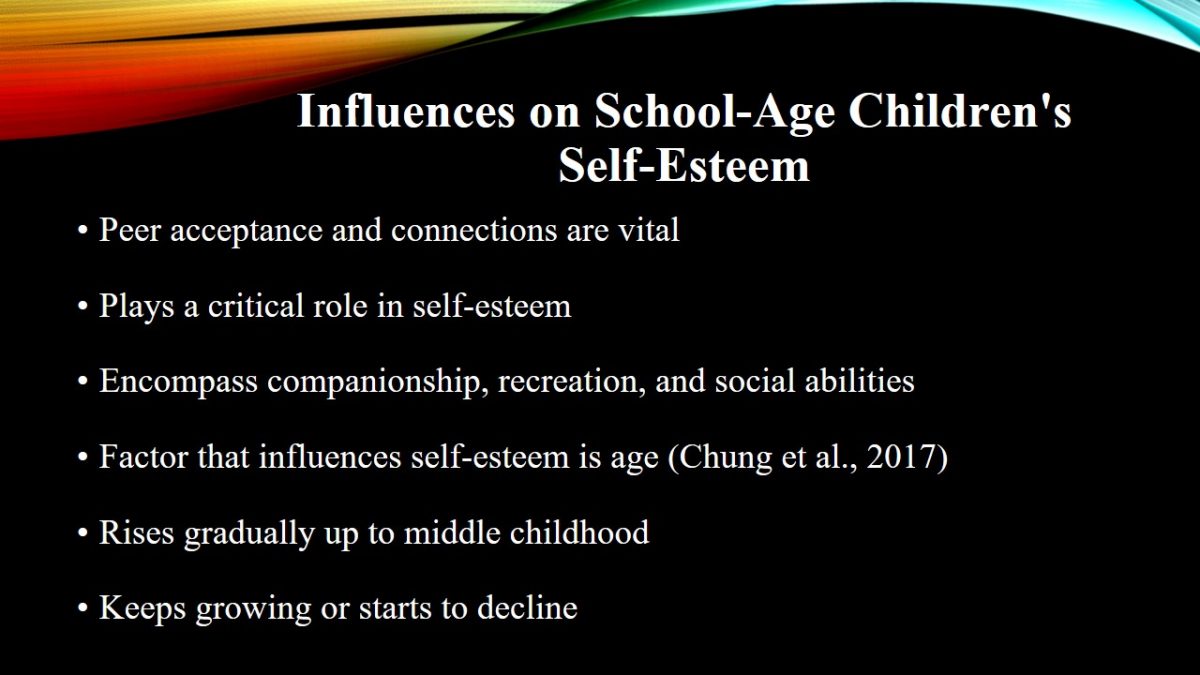
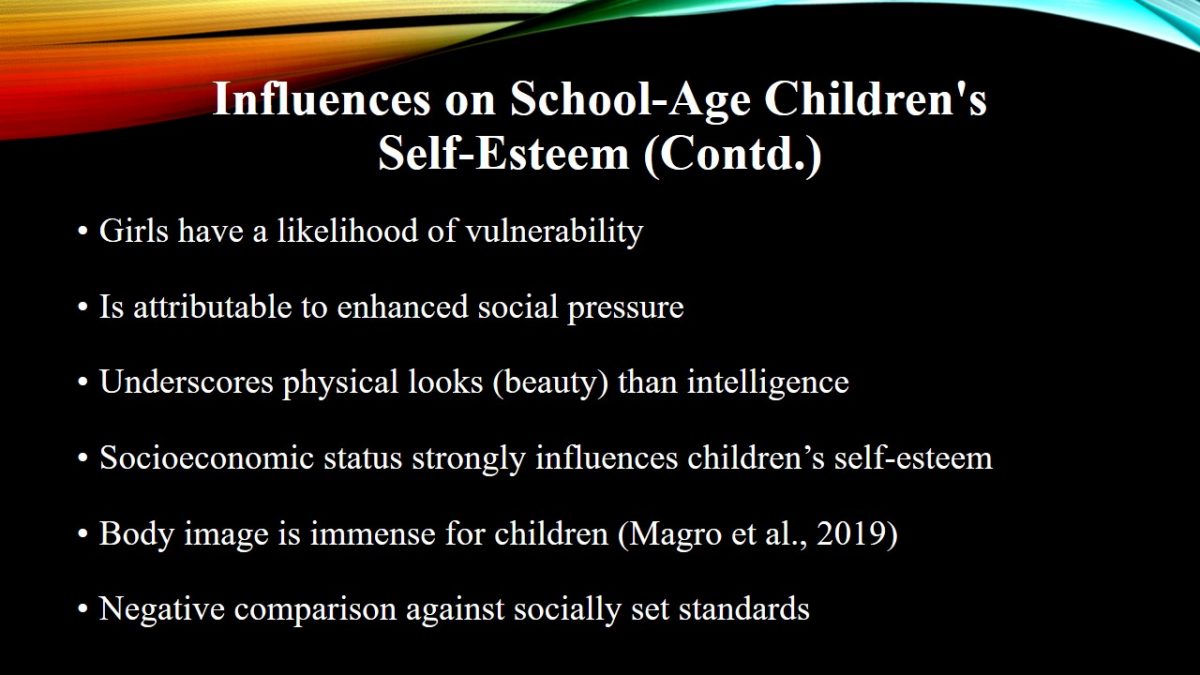
Effects of Very High Self-esteem on Children’s Adjustment
- Perceive themselves as skilled problem solvers.
- Does not always have positive effects (Thomson et al., 2018).
- By verbal defensiveness or physical violence.
- Conviction that others’ efforts are insignificant.
- Make a person miss good opportunities.
- Renders them blind to own mistakes.
Children with high self-esteem believe in their ability and perceive themselves as skilled problem solvers, which often results in their excellent performance. Nevertheless, extremely high self-esteem does not always have positive effects on children’s adjustment (Thomson et al., 2018). This is because in such occurrences self-esteem may be followed by verbal defensiveness or physical violence when one’s views are not valued. Excessively high self-esteem results in the conviction that the efforts of others are insignificant. It generates pride that makes a person miss numerous good opportunities. This has a negative effect on children’s adjustment because it renders them blind to their own mistakes and hinders their learning.
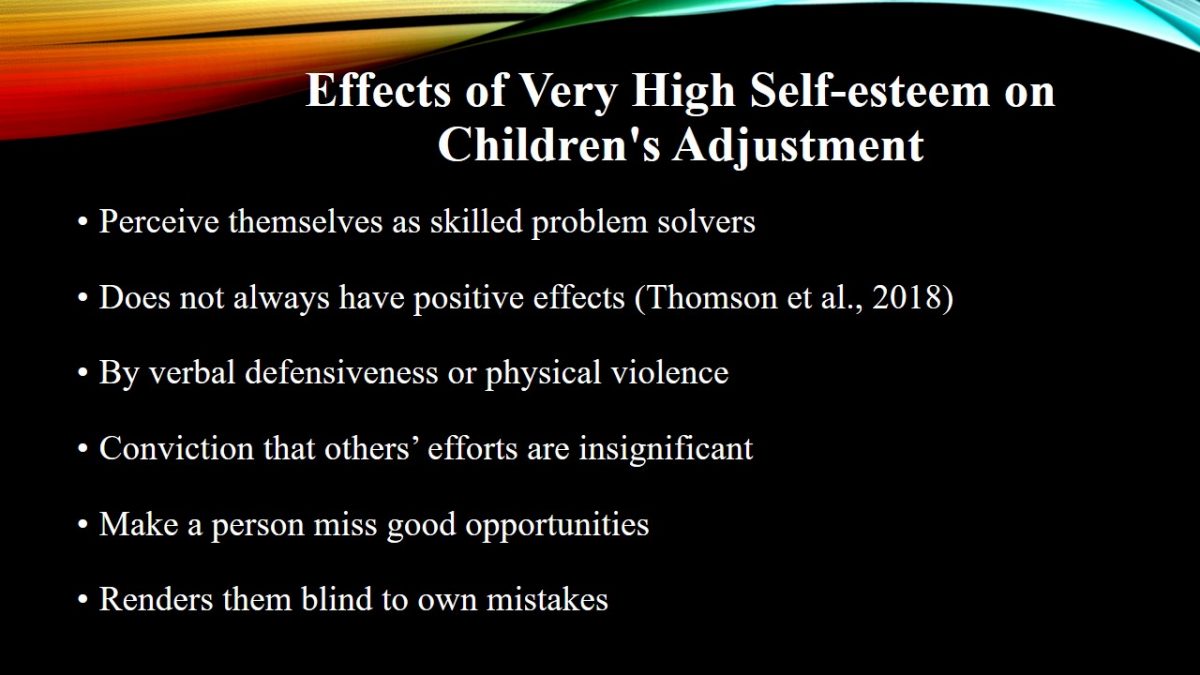
Typical Consequences of Low Self-Esteem
- Generates negative feelings of being worthless.
- Shame, embarrassment, guilt, sadness, and anger.
- Poor academic performance and violent behavior.
- Victims of bullying and teen pregnancies (Fiorilli et al., 2019).
- May start smoking or using drugs.
- Low self-esteem creates physical health problems.
Low self-esteem in middle childhood generates negative feelings of one being worthless. This results in shame, embarrassment, guilt, sadness, and anger about oneself. Such feelings cause other problems in the lives of children encompassing poor academic performance, involvement in crime, and the development of violent behavior. In most cases, children with low self-esteem become victims of bullying and teen pregnancies and may drop out of school (Fiorilli et al., 2019). If their problems are not addressed in time, they may start smoking or using alcohol and other drugs, develop suicidal ideations, suffer depression, and even commit suicide. Furthermore, low self-esteem in middle childhood creates physical health problems.
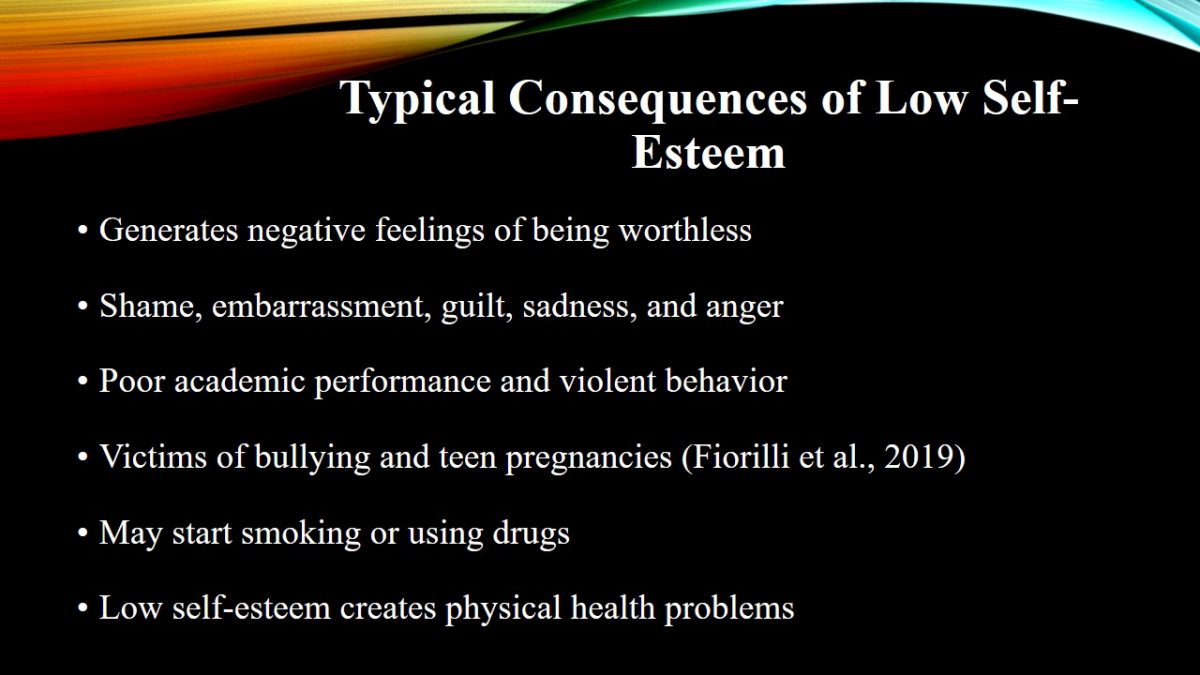
Strategies that Parents and Teachers Can Use to Promote Children’s Self-esteem
- Progress from dependence and develop independence.
- Learn new skills and make friends (Thomson et al., 2018).
- Environment has love, safety, and stability.
- Prepare well-supervised play activities for children.
- Encouraging moral, emotional, and cognitive development.
- Carefully assess children to recognize difficulty.
To promote children’s self-esteem, parents and teachers should help them progress from dependence on family members or caregivers to independence. This may include helping them to learn new skills regularly and make friends at school (Thomson et al., 2018). Parents should ensure that the home environment generates love, safety, and stability. Parents and teachers should prepare well-supervised play activities for children at home and at school. This promotes children’s self-esteem by encouraging moral, emotional, social, and cognitive development, which enhances the acceptance of peers. Moreover, parents and teachers should carefully assess their children as a way of recognizing any difficulty and helping them overcome arising challenges.
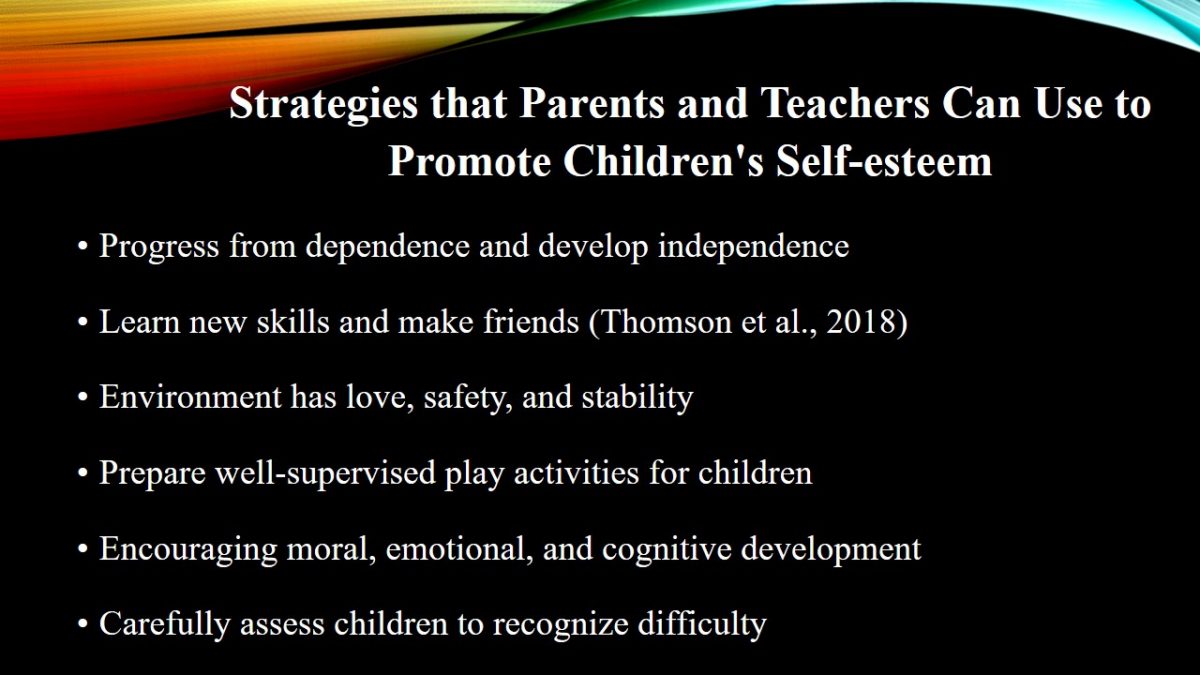
Behaviors that Adults Should Avoid
- Affect sense of love or ability.
- Negative criticism from parents and adults.
- Point of engaging in substance abuse.
- Pressurizing children to attain impractical goals.
- Avoid domestic violence or verbal attacks (Fiorilli et al., 2019).
- Negatively interfere with their daily activities.
Adults should ensure that they always promote self-esteem in their children by avoiding behaviors that negatively affect the sense of love or their ability. Negative criticism from parents and other adults can result in children who have low self-esteem feeling worse even to a point of engaging in substance abuse. Adults should avoid pressurizing children to attain impractical goals since this may lead to low self-esteem. Parents should refrain from domestic violence or verbal attacks in front of their children (Fiorilli et al., 2019). Adults should evade behaviors that create low self-esteem in children, negatively interfere with their daily activities, or cause depression.
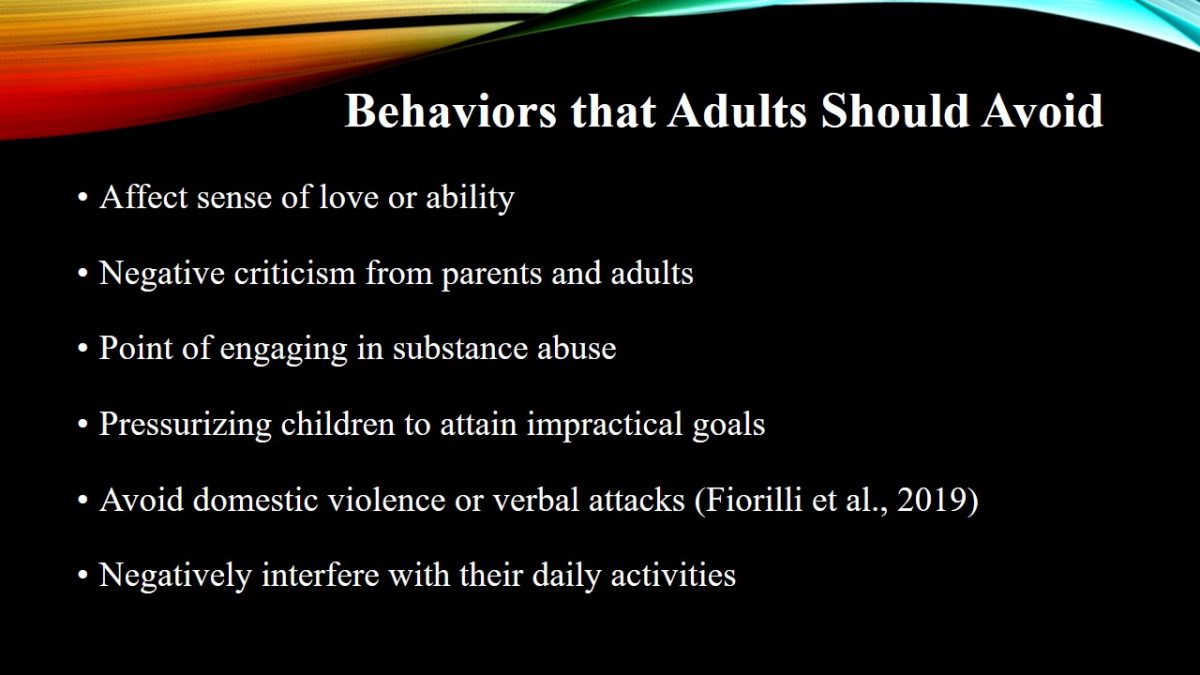
Conclusion
- Self-esteem relies on their physical appearance.
- Build an inner sense of self-control.
- Chances for development in school-age children.
- From high-income families have increased self-esteem.
- Carefully evaluate children to identify problems.
- Influence emotions of love or capability.
As children in middle childhood proceed to higher grades, self-esteem relies on their physical appearance and capacity to make friends with their peers. Parents and educators should support children to build an inner sense of self-control. Increased self-esteem, attributable to good relationships with peers offers a broad scope of learning and chances for development in school-age children. Minors from high-income families often have an increased sense of self-esteem than their counterparts from underprivileged backgrounds. Adults should carefully evaluate their children to identify any problems. Adults should enhance self-esteem in their children by evading behaviors that negatively influence the emotions of love or their capability.
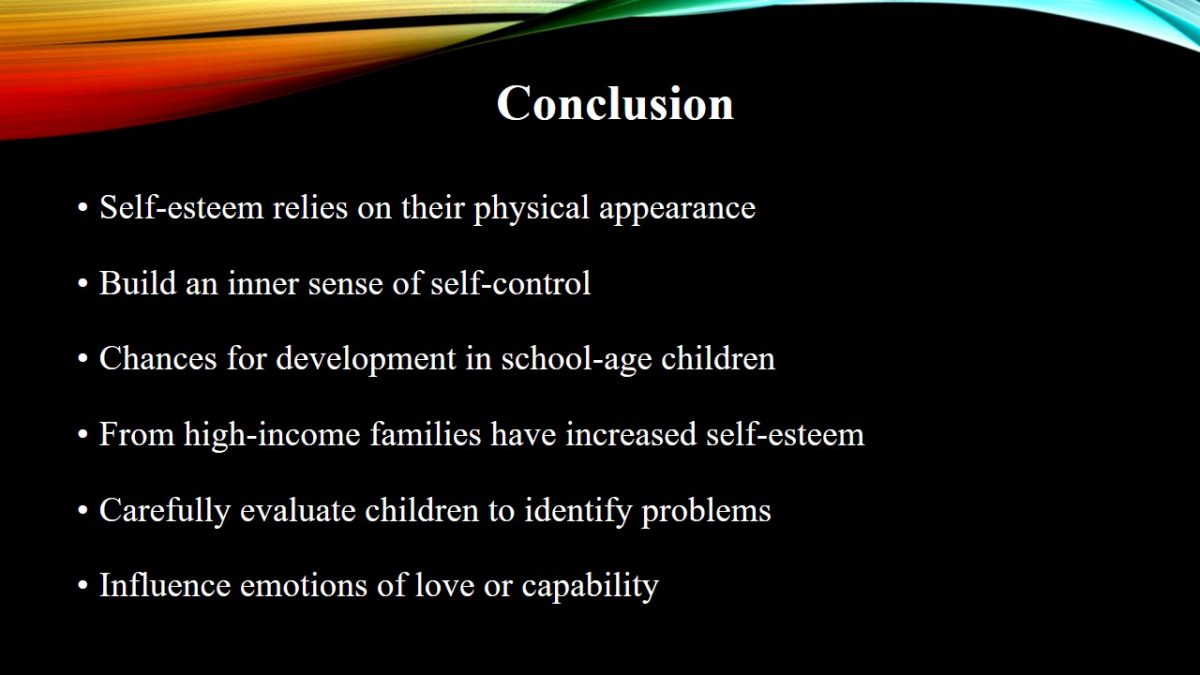
References
Chung, J. M., Hutteman, R., van Aken, M. A., & Denissen, J. J. (2017). High, low, and in between: Self-esteem development from middle childhood to young adulthood. Journal of Research in Personality, 70, 122-133. Web.
Fiorilli, C., Capitello, T., Barni, D., Buonomo, I., & Gentile, S. (2019). Predicting adolescent depression: The interrelated roles of self-esteem and interpersonal stressors. Frontiers in Psychology, 10, 565-570. Web.
Magro, S. W., Utesch, T., Dreiskämper, D., & Wagner, J. (2019). Self-esteem development in middle childhood: Support for sociometer theory. International Journal of Behavioral Development, 43(2), 118-127. Web.
Thomson, K. C., Oberle, E., Gadermann, A. M., Guhn, M., Rowcliffe, P., & Schonert-Reichl, K. A. (2018). Measuring social-emotional development in middle childhood: The middle years development instrument. Journal of Applied Developmental Psychology, 55, 107-118. Web.